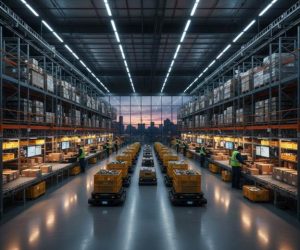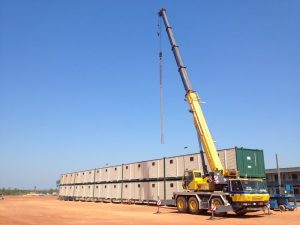
Struggling to fit growing inventory into the same footprint is a common challenge for facilities of every size. By investing in industrial racking, businesses can reclaim vertical space, streamline material flow, and postpone costly expansions. Purpose-built rack configurations transform unused cubic volume into productive storage, allowing teams to stage, pick, and replenish stock with fewer steps—and fewer headaches. From selective pallet racks to high-density options, properly planned racking unlocks capacity without sacrificing safety or throughput.
A thoughtfully designed system doesn’t just add extra shelves; it reshapes your entire workflow, improves ergonomics, and keeps fast-moving items within easy reach. Below are the core ways industrial racking conquers space limitations and positions operations for growth.
Maximizing Vertical Real Estate
Warehouses often have generous ceiling heights yet store goods only six or seven feet high. Industrial racking converts that wasted airspace into valuable pallet positions by stacking loads safely up to 30 feet or more, depending on local code and equipment limits. The result is a dramatic bump in storage density—sometimes doubling capacity within the same square footage.
Because lift-truck aisles remain narrow, you can add rows of racks without widening pathways, further conserving floor space. Over time, these vertical gains delay the need for building additions or off-site overflow storage, producing significant cost savings.
Improving Workflow Efficiency
Space optimization is only half the equation; faster, safer handling completes the picture. Well-mapped rack aisles create clear, one-way travel paths that reduce congestion and accident risk. Adjustable beam positions let teams slot SKUs by size and turnover rate, ensuring popular items stay at ergonomic heights while bulk stock occupies higher tiers.
Industry research on how industrial racking systems improve warehouse efficiency shows that aligning rack type with SKU velocity—such as using flow racks for fast movers—can trim pick times by up to 30 percent. Shorter travel distances and fewer touches translate into higher daily order volumes without expanding staff.
Enhancing Safety and Compliance
Going vertical shouldn’t compromise safety. Industrial racking engineered for seismic and load-rating standards maintains structural stability even under heavy, uneven loads. Accessories like wire decking, column guards, and pallet supports prevent items from tipping or falling, protecting workers below.
Routine rack inspections, guided by ANSI/RMI guidelines, catch issues early and keep compliance costs in check. Securely anchored uprights and properly engaged beam locks minimize sway, ensuring confidence when operators place or retrieve pallets at height.
Adapting to Changing Inventory Needs
Markets shift quickly, and storage requirements can follow suit. Modular racking components allow beams to be repositioned, bays to be added, and accessories—such as carton flow lanes—to be installed as product lines expand. This adaptability means a single system can serve seasonal surges one year and completely new product mixes the next without major capital outlays.
Analysts examining industrial racking systems in improving warehouse efficiency note that facilities with modular racks adjust three times faster to SKU changes than those relying on static shelving. The ability to pivot quickly keeps fulfillment targets intact even when demand spikes unexpectedly.
Supporting Lean, Sustainable Operations
Finally, racking bolsters lean initiatives by reducing motion waste and maximizing every inch of the building envelope. Higher storage density lowers a facility’s carbon footprint per pallet stored, while efficient travel paths cut fuel consumption for lift trucks. Less “air” shipped between locations means fewer trucks on the road, aligning space savings with sustainability goals.
Conclusion
When floor space runs out, expanding upward with industrial racking delivers a smart, scalable answer. By maximizing vertical capacity, improving pick efficiency, maintaining rigorous safety, and adapting to evolving inventory profiles, racking systems turn spatial constraints into competitive advantages. Facilities that embrace these high-performance solutions not only solve today’s overcrowding but also build a flexible foundation for tomorrow’s growth.








